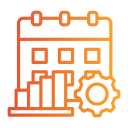
Your Guide to the Top Cloud Accounting Tools for Small Businesses
Chosen theme: Top Cloud Accounting Tools for Small Businesses. Welcome to a practical, inspiring tour through modern bookkeeping made simple. We’ll spotlight what really matters when selecting a cloud accounting platform, share real-world wins, and help you feel confident about your next step. Join the conversation, ask questions, and subscribe for friendly insights that turn complex finances into everyday clarity.
Why Cloud Accounting Tools Change the Game for Small Businesses
Time Saved Is Momentum Gained
Automatic bank feeds, receipt capture, and recurring invoices remove repetitive chores that drain energy. With less manual entry, owners reclaim evenings for planning, family, and growth. Tell us which task you’re most excited to automate first.
Real-Time Numbers, Real Confidence
Seeing cash flow and profit reports update instantly helps you price better, hire at the right moment, and avoid end-of-month surprises. Cloud dashboards bring clarity to decisions that used to feel like guesswork.
Work From Anywhere, Collaborate Effortlessly
Invite your bookkeeper, accountant, or co-founder into the same system with controlled access. Review expenses on your phone, approve bills on the road, and keep everyone aligned without emailing unruly spreadsheets.

Feature Checklist for Top Cloud Accounting Tools
Look for clean general ledger, invoicing, bills, bank reconciliation, and robust reporting. Multi-currency, project tracking, and inventory can be essential if you sell products or run client-based work with job costing.
Stories from the Front Lines: Small Businesses and Their Tools
The Bakery That Finally Slept on Fridays
A neighborhood bakery switched to Xero, connected its bank feeds, and used rules to categorize wholesale payments. Friday reconciliations dropped from two hours to fifteen minutes, freeing time for menu planning and early delivery prep.
A Solo Designer Who Stopped Chasing Invoices
Using FreshBooks, a freelance designer enabled online payments and gentle reminders. Clients paid faster, proposals converted better, and monthly income swings eased. She now reviews her dashboard before coffee and plans projects confidently.
The Nonprofit That Found Boardroom Clarity
A small nonprofit adopted QuickBooks Online with class tracking for programs. Board reports shifted from dense spreadsheets to clear visuals. Donor confidence grew when they could explain every dollar’s purpose in two sentences.
Implementation Playbook: From Trial to Confident Go-Live
Export customers, vendors, chart of accounts, and open balances from your old system. Import in stages, then reconcile opening balances. Keep PDFs of prior reports for reference, and run both systems briefly to cross-check accuracy.
Implementation Playbook: From Trial to Confident Go-Live
Group revenue and expenses by how you make money and spend it. Use subaccounts sparingly. Align categories with your reporting needs, not someone else’s template, so every line helps you act quickly and wisely.
Implementation Playbook: From Trial to Confident Go-Live
Schedule short, focused training. Document weekly routines for invoicing, approvals, and reconciliations. Celebrate the first zero-variance reconciliation and faster month-end close. Share what worked in the comments to help fellow owners.
Integrations That Supercharge Cloud Accounting
Payments and Invoicing That Just Flow
Pair your accounting app with Stripe, PayPal, or GoCardless for faster payments. Automatic reconciliation reduces errors, while branded invoices and payment links remove friction. Ask customers which method they prefer and measure conversion.
Payroll, Benefits, and Contractor Management
Integrations with providers like Gusto or QuickBooks Payroll simplify taxes, filings, and onboarding. Sync wages and liabilities automatically, then review payroll reports alongside cash forecasts to avoid shortfalls during busy seasons.
E‑Commerce, Inventory, and POS Harmony
Connect Shopify, WooCommerce, or Square to keep sales, fees, and stock aligned. Map accounts carefully so payouts and cost of goods sold post correctly. A tidy integration saves hours and protects margin visibility.

Review rolling thirteen-week cash forecasts augmented by real-time receivables and payables. Spot crunch points early, schedule payments smartly, and keep your team aligned around runway and growth investments.

Use item or project tracking to understand gross margin per product, client, or channel. When a report highlights low-margin work, adjust pricing, streamline delivery, or politely decline unprofitable deals.

Reconcile monthly, attach receipts, and tag deductible expenses as you go. With clean books, your accountant can optimize deductions and file confidently. Subscribe for our monthly checklist to stay ahead of deadlines.
Avoiding Common Pitfalls When Choosing Top Tools
Bank rules are powerful, but review them regularly. Spot checks catch miscategorized transactions before they snowball. Build a simple monthly audit routine and share your template with peers in the comments.
